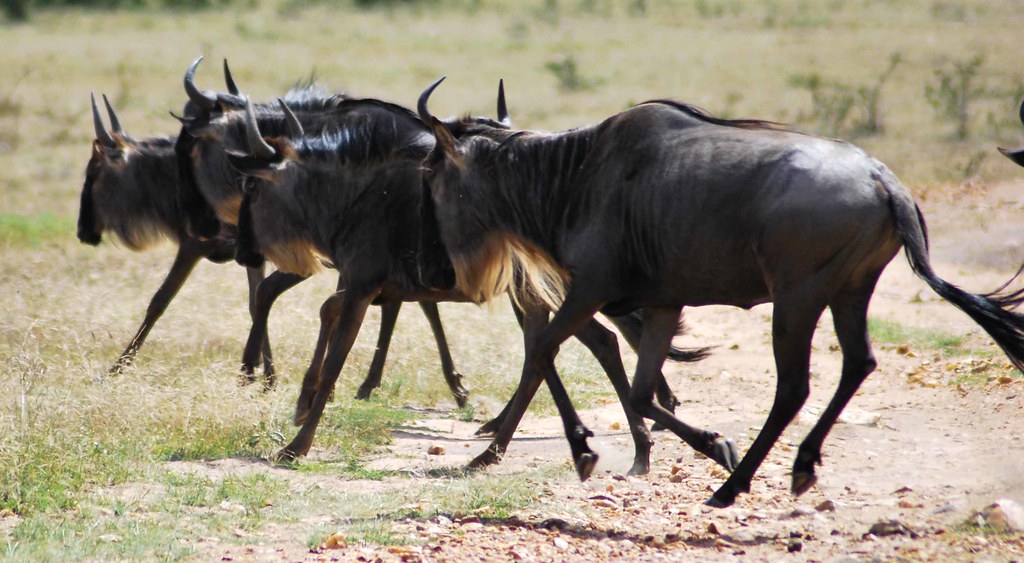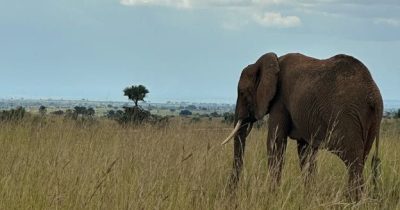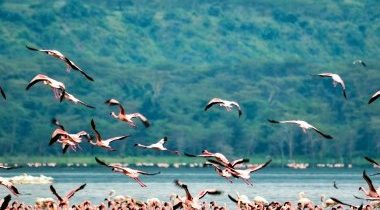Masai Mara National Reserve – Wildebeest Migration Tours
Established in 1961, Masai Mara National Reserve is a hot safari spot located in South Western Kenya within the Great Rift Valley neighboring Serengeti National Park in Tanzania. The reserve’s name “Masai Mara” was inspired by the initial inhabitants the Masai who now live along its borders, the short trees and savanna vegetation that largely covers the park is called “Mara” in the Masai dialect hence the name “Masai Mara.”
Because of its famous breathtaking wildlife species and scenery, the reserve is known as the world’s eighth wonder. The area was originally 520 square kilometers, but it was expanded to 1821 km2 during the same year. In 1974 part of the reserves land measuring about 159 km2 was returned to locals and more 162 km2 was returned in 1976 leading to the current 1510km2 since 1984.
Wildlife in Masai Mara
Masai Mara is home to diverse African wildlife species with lots of ranches that conserve these species located at the reserve borders. It is famously known for the “Great Migration” This is the annual Wildebeest migration where over a million wildebeest including large herds of Zebras move towards the North into Serengeti National Park, this migration usually happens between July and September.
Large numbers of tourists flock to the park to witness this natural and magnificent migration, other animals to find in the reserve are the big four safari animals which include Lions, Elephants, Buffaloes, and Rhinos like the black Rhinos. Giraffes, Cheetahs, and Crocodiles are also a sight to see while here. It’s no doubt that Masai Mara offers one of the best African Safaris. The park also has two water sources, the rivers Masai Mara and Talek which quench the animal’s thirst and also support the growth of the savanna vegetation that comprises short grasses and isolated acacia trees.
Activities in Masai Mara National Reserve
Game Drives
This is a must-do activity on any safari excursion in Africa, and it can be done during the day or at night, with the option of a full or half-day drive. The Masai Mara is one of the few national reserves that permits night game drives. The drives provide opportunities to get close to wildlife animals and to see a variety of animals at once, particularly when passing by river banks where most of the animals congregate to drink water. You can also go for an early morning, late evening, or night drive to see some nocturnal animals.
Wildebeest Migration Viewing in Masai Mara National Reserve
An annual event that occurs between July and September attracts over 1000 tourists eager to witness this memorable live action of the Wildebeest animals moving in large herds as they cross over to Serengeti National Park.
Hot Air Balloon Safaris
Though similar to game drives, this activity involves watching the animals and the park from an aerial view while in the hot air balloon that flies over the park. This is an amazing experience that gives you a bird’s eye view of the park. You get to see breathtaking views that can only be seen from above. The activity begins at dawn and provides relaxing views as the sun rises.
Visiting the Masai Villages
The Masai tribe is a native tribe found within the semi-desert southern and northern regions of Kenya, they are nomadic pastoralists who have carried on their unique culture for the past decades. Their unique dress code involves wrapping sheets of black and red checked cloth around their bodies accompanied by beautiful jewelry made out of beads for the ladies.
Masai people also pierce their lips in which they insert round-shaped plates. Their interesting cultural dance that mainly involves jumping up and down can easily be tried on by the visiting tourists. Their homesteads are headed by men and decision-making in the community is made by the elderly men, the young men are turned into Masai warriors to protect their families and communities from danger.
The Masai speak the Maa language. Visiting the Masai community that lives next to the reserve gives you an insight into the fascinating Masai culture Visit them and learn more about them, and don’t forget to support them by tipping or buying some of their beautifully handcrafted art pieces like the bead necklaces.
Birding in Masai Mara National Reserve
With over 500 bird species, bird enthusiasts are not forgotten. The species includes both permanent residents and visitors who have migrated to the park for a short time. These are seen during game drives and nature walks.
Nature Walks
These are guided walks within the reserve where game rangers accompany tourists on walks through the reserve’s demarcated routes. The walks allow visitors to get up close and personal with the reserve’s natural beauty.
How to get there?
The reserve is accessible through any of the six gates located around it such as the Oloololo gate in the North East, Musiara in the East, and Talek in the North West. The furthest gate is a 5-6 hour drive away from Nairobi the capital.
What is the best Time to Visit Masai Mara National Reserve?
Masai Mara National Reserve can be accessed all year round though if you are interested in specific activities like the Great Wildebeest Migration, it’s better to visit between July and September. Other than that you can visit at any time of the year.








